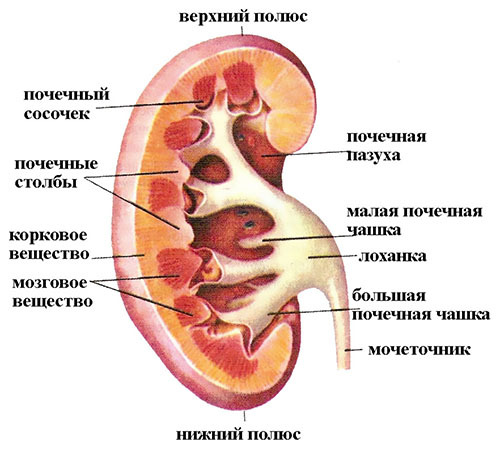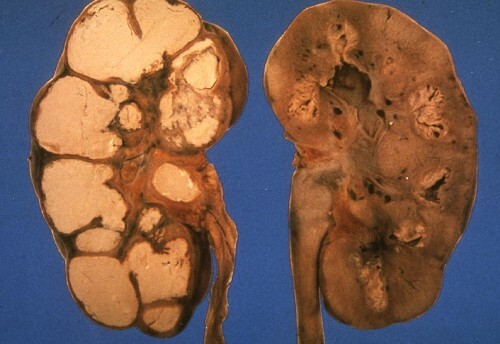Epispadias: what is it, causes, symptoms, treatment, prognosis
Content
- What is epispadias?
- Types
- Exstrophy-epispadias complex
- Types of male epispadias
- Female epispadias
- Causes
- Symptoms of epispadias
- Diagnostics
- Risks and associated conditions
- Epispadias versus hypospadias
- Circumcision and epispadias
- Surgery
- Before surgery
- Male epispadias operations
- Operations of female epispadias
- Recovery from surgery
- Sexual activity after treatment
What is epispadias?
Epispadias is a rare congenital urological defect. Simply put, epispadias is a disease that is present at birth and affects the urinary tract and changes the way urine (urine) is excreted from the body. Epispadias are more common in boys than girls, with about one in 100,000 men and about one in 480,000 women.
Types
Epispadias can occur alone, but it is much more common in one or more other conditions - from additional changes in the pathway of urine output from body to more serious urological problems, bladder problems, pelvic floor problems, incomplete abdominal wall formation, or even oddly located anus. This broad spectrum of epispadias-related conditions is called the exstrophy-epispadias complex.
Exstrophy-epispadias complex

For clarity, the term epispadias refers to a problem with the genital area where urine exits and is the visible part of the defect that is usually diagnosed based on external signs.
About 10 percent of patients with epispadias have this problem alone and do not experience additional problems. The remaining 90 percent of patients have an exstrophic-epispadias complex, which means epispadias plus an additional comorbid problem. These additional problems may be obvious, for example, the bladder may be visible through the abdominal wall, or it may be hidden and detectable after a diagnostic examination.
The exstrophy-epispadias complex is much more common than epispadias alone, affecting one in 30,000 children. In these children, an external change in the genitals is present along with some other changes in the urinary tract, abdominal muscles, spinal cord or intestines.
Bladder exstrophy is one of the most common conditions in epispadias and can be diagnosed during pregnancy. This condition is caused by the incomplete covering of the abdomen by the skin and muscles, which allows the bladder to be seen.
Other conditions that commonly appear with epispadias are small genitals, pubic bones not meeting, pelvic floor changes, anus out of typical position, and inguinal hernia.
These problems arise together because they occur during the same period of fetal development. These different areas form at roughly the same developmental stage, so take a break during this important during pregnancy can lead to problems with several areas of the body that are in the developmental stage at the same time.
Types of male epispadias
The opening in the penis where urine exits the body is called the urinary tract. This opening is usually located at the tip of the penis, but with epispadias, this opening appears along the top of the penis. Where the opening is at the top of the penis determines the type of epispadias present.
- Penopubic epispadias. This is where the urinary canal is close to the body, possibly not on the penis, but next to the pubic bone at the base of the penis.
- Espadia of the penis. The urethra sits on the shaft of the penis, somewhere up to the glans of the penis, but above the base where the shaft meets the body.
- Glanular epispadias. This is where the urinary canal is on the glans of the penis, but not in the standard place at the end.
Read also:Asthenozoospermia in men
Female epispadias
In girls with epispadias, the urethra divides the clitoris in two, and this abnormal cleavage causes urinary incontinence. It rarely occurs without other additional problems affecting the bladder, kidneys, or urethra. This condition occurs with abnormal spaces between the pubic bones that are absent in normal anatomy.
It can also be found in other conditions, such as a tight vagina that will need to be stretched to sexual intercourse in adulthood, exposure of the bladder or urethra, and other conditions affecting urination.
Causes
Epispadias is caused by a developmental change during a specific stage of pregnancy when the urinary tract forms. It is often difficult or impossible to know what led to the abnormal development of the fetus on these particular days of development. In the vast majority of cases, there are no obvious problems with the mother or pregnancy.
Men are four times more likely to have epispadias than women. Children born with epispadias are much more likely to develop epispadias, with a 1 in 70 chance of having a child with such a birth defect.
Symptoms of epispadias

In many cases, epispadias is diagnosed by a healthcare professional at birth due to the abnormal appearance of the genitals in the newborn. In mild cases, when the urethra is slightly deviated from its normal position, this condition can be ignored until there is difficulty with urinary incontinence.
Some children experience stress urinary incontinence when urine drips after sneezing or coughing, or may find that when they have the urge to urinate, they cannot hold onto the urine until they reach the bathroom. A genital examination is often part of the process of diagnosing the cause of urinary incontinence and can lead to the diagnosis of epispadias.
Diagnostics
Epispadias is usually diagnosed, at least initially, by the appearance of the genitals shortly after birth. This diagnosis often requires additional tests to determine if additional areas of the urinary tract are involved. These additional examinations include: kidney function tests, urine tests, ultrasound (ultrasound), computed tomography (CT), x-rays and potentially multiple urologic tests imaging the inside of the urinary tract ways. If the colon is involved, may need colonoscopy or other procedures to check the spinal cord.
In more severe cases involving the bladder or spine, the diagnosis can be made in utero during routine maternal ultrasound examinations. In this case, the parents can receive counseling about epispadias and other existing conditions, and the birth is usually planned in facility that can provide immediate assistance to a pediatric team that is able to properly care for baby.
Risks and associated conditions
Epispadias is more than a cosmetic problem for the vast majority of children. The condition often causes urinary incontinence, which manifests itself as occasional or persistent discharge of urine, organ injury, and significant child embarrassment.
Read also:Bladder polyp
Curvature of the penis is common in men with espadias. More significant is the likelihood of invisible problems with internal organs, which are less obvious than exposure of the genitals. Approximately 90 percent of all epispadias patients have additional problems.
Epispadias versus hypospadias
Hypospadias, like epispadias, is a birth defect in which the place where urine leaves the body is abnormal. In boys, hypospadias means that the urethra is located on the underside of the penis and not at the tip of the penis. The meatus (opening of the urethra) may be slightly lower than that of an ordinary person.
Hypospadias is very rare in women: the urinary tract is on the wall of the vagina, not in its typical location, and often ignored until the patient has difficulty urinating, leading to staging diagnosis.
Circumcision and epispadias
If epispadias are present, avoid circumcisions until the successful completion of the surgical intervention. This is because additional foreskin tissue can be used during surgical repair to rebuild the penis. After successful treatment of the child, circumcision may be considered, but it is strongly advised not to do so until then.
Surgery
The risks of all operations include the general risks of surgery and the risks associated with the administration of general anesthesia. If epispadias recovers, the risks vary depending on the severity of the problem and the nature of the surgery. In general, the risk of urinary incontinence is high, as many people already have this condition before surgery, and it is hoped that surgery will still help correct urinary incontinence.
Urinary tract infections, fistulas, hypospadias, and trauma to the penis are common risks with surgery. People with bladder damage may have additional risks of bladder stones and bladder perforation.
In some male patients, surgical correction of epispadias with urine output in the upper part of the penis can lead to hypospadias. This can be corrected if necessary.
Before surgery
Typically, after epispadias is diagnosed, significant tests are done to determine if the defect is present in other areas of the abdomen, pelvis, colon, and urinary tract. These examinations determine the nature of the problem and determine the course of surgical treatment.
If the bladder or other areas are exposed, the initial procedure is to cover those areas, often performed in the newborn. Other bladder problems can wait up to 4 or 5 years.
Patients with epispadias confined to the genitals may have one surgical procedure, but patients with other problems may have a whole treatment plan that includes several stages of surgical procedures. Genital repair can be performed as early as 6 months of age and is usually completed within a year.
The wide range of problems that epispadias can have means that the treatment plan is unique for each child, and specific procedures may be planned at a certain age, however the plan may be changed depending on the success of the previous procedures.
Read also:Symptoms and treatment of cystitis in women
Male epispadias operations

There are two procedures commonly done to treat epispadias in men, the Mitchell technique and the Cantwell technique, which are often modified by surgeons to meet the patient's needs.
Surgery can vary widely from patient to patient, but the general steps of the procedure are essentially the same. After general anesthesia has been given, the operation begins by disassembling the penis into three separate tissue sections. The urethra (urinary tube) is reconstructed using a procedure called urethroplasty. This allows the urethra (urine opening) to move to the correct location. This repair of the urethra also allows the curvature of the penis to be corrected.
The penis is then reassembled using surgical stitches. In most cases, the patient leaves the operating room with a urinary catheter.
Operations of female epispadias
Once general anesthesia is given, the procedure usually begins by emptying the urethra from the adjacent clitoral tissue. This allows you to move the urethra, the opening from which urine exits the body, to the appropriate location. The clitoris, which is usually a single piece of tissue but divided in the case of epispadias, can be sewn together for a normal appearance. Until the end of the operation, a catheter is installed, which remains after the end of the operation.
Recovery from surgery
The typical patient recovers quickly from surgery, returning home a day or two after surgery. More complex bladder repair surgeries often require longer recovery and hospital stay, and may be one of the many operations before achievement of the result.
The goal of epispadias surgery is to restore the normal functionality of the urinary tract and give it a normal appearance.
Most patients manage to achieve normal urinary function, but may require more one procedure to achieve a healthy result depending on the severity of the problem and on the urinary bubble.
Possible complications
In the long term, usually in adulthood, the patient will be at a higher risk of developing the following conditions:
- epididymitis;
- prolapse of the vagina;
- prolapse of the rectum;
- bladder cancer;
- kidney cancer.
Sexual activity after treatment
Sexual activity usually proceeds normally after epispadias is treated, even if additional treatment is required. Men may have low sperm count or low ejaculate volume, which results in decreased fertility but not infertility.
In one small study of 28 female patients with epispadias with bladder exstrophy who wanted to become pregnant, 19 became pregnant a total of 57 times. These women were at an increased risk of postpartum hemorrhage. In addition, one woman had an injury to the uterus and another had a fistula after childbirth.
The vast majority of patients have the opportunity to lead a normal and healthy lifestyle, including marriage, employment and raising a family. These patients tend to continue to see urologists throughout their adult life, as there is the potential for complications that may occur later in life.



